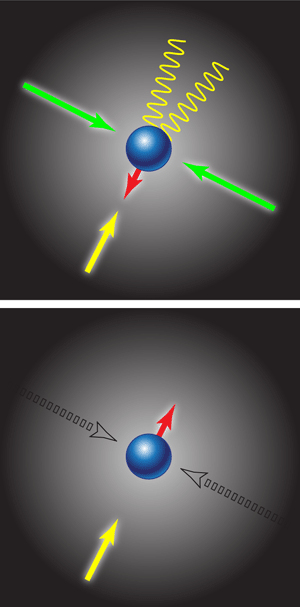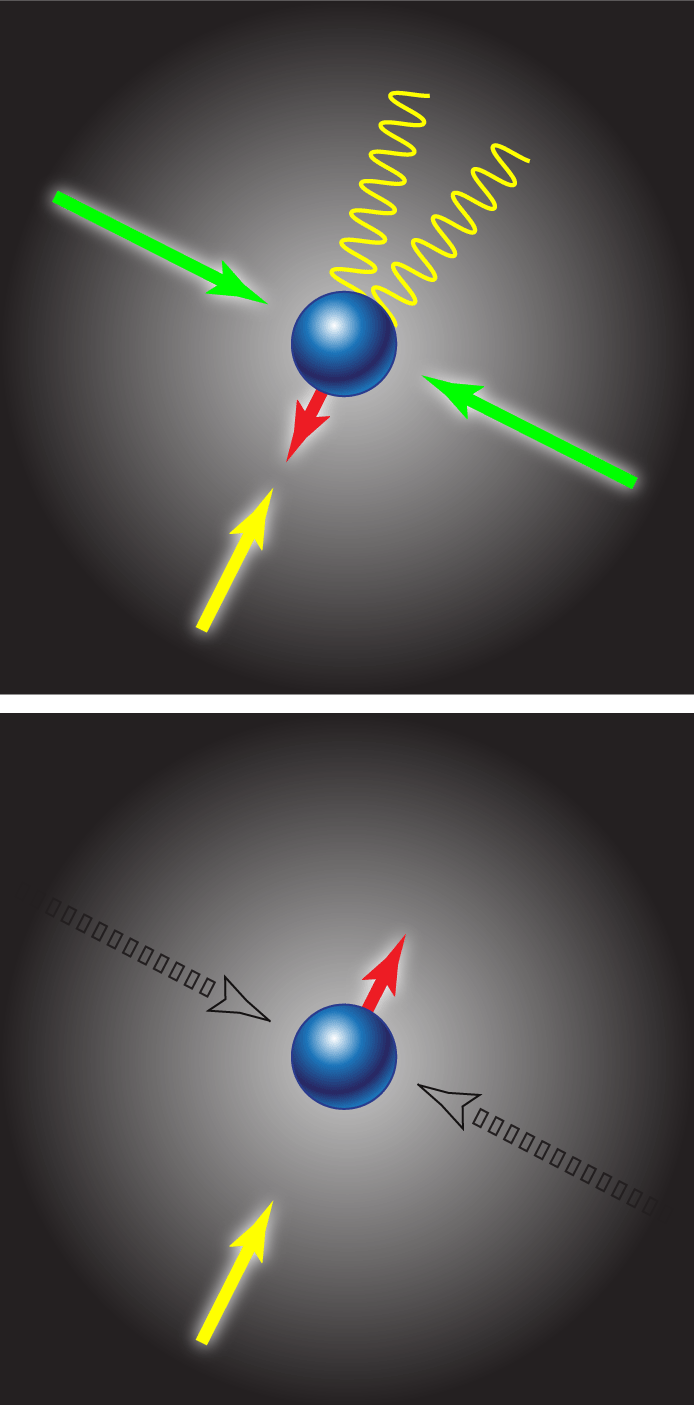How to Manipulate Nanoparticles with Lasers
In recent experiments, physicists have found that lasers can push and pull on nanoparticles more strongly than standard theory predicts. In Physical Review Letters, a Japanese team proposes an explanation. They calculate the complex interactions between laser beams and nanoparticles and find that the resulting forces are stronger than had been expected, and can be controlled in novel ways. These forces should allow much broader use of laser manipulation for applications such as nanoparticle sorting.
Optical tweezers—devices that use lasers to trap and move micrometer-sized objects such as biological cells and particles of inorganic material—have revolutionized fields such as biochemistry, cell biology, and materials engineering. In these devices, light is focused to produce a narrow region at which the electric field associated with the radiation is strongest. When dielectric materials, which respond to an external electric field by generating an internal field with the opposite orientation, are placed in optical tweezers, they drift “uphill” toward the region of strong electric field and remain trapped there.
In the last few years, researchers have turned their attention to objects of nanometer size, hoping to create “nanotweezers” that can manipulate nanoparticles and even molecules with the same dexterity. There’s a problem, however. The dielectric response of nanoparticles is too weak to allow them to be manipulated like larger objects, while other forces that arise through the scattering and absorption of light are also small, and in any case tend to push nanoparticles away from the focal point.
Although such arguments indicate that nanotweezers are unlikely to be of much use, several groups have reported remarkable success, such as being able to trap nanoparticles for much longer than expected. Other researchers have found that adding a second laser, several orders of magnitude less intense than the main beam, can substantially increase the trapping time.
Tetsuhiro Kudo and Hajime Ishihara of Osaka Prefecture University in Japan say that the unexplained effects are the result of lasers interacting with the internal states of molecules and nanoparticles to produce previously unrecognized forces. They can explain trapping in both the single-laser and the two-laser cases, but the latter is easier to understand.
The researchers imagine a first laser operating at a frequency that excites target molecules in a nanoparticle—typically, by kicking them into a state with additional vibrational or rotational energy. This trapping light is arranged to shine equally from opposite directions, so that the nanoparticles are not pushed one way or the other. They then consider what happens when a second laser, perpendicular to the first, hits the excited molecules with light of the right frequency to stimulate them to deexcite, emitting a photon in the process. Because this photon will tend to depart in the direction of the second laser beam, the deexcited molecules will recoil in the opposite direction. The second laser thus creates a pulling force or “stimulated recoil force,” as Kudo and Ishihara call it. Switching off the first laser stops the excitation and recoil process. Photons from the second beam then hit the nanoparticles and push them gently away. In effect, Kudo and Ishihara have worked out the theory behind a nanoparticle tractor beam that can both push and pull objects. Until now, lasers have only been able to trap or push particles.
There are other advantages. If one beam barely touches the other, the volume of space in which the beams overlap can be much smaller than the wavelength of the light. That allows the positioning of nanoparticles with subwavelength precision. In addition, because the new effects work only for nanoparticles with the specific molecular excitations that the lasers are tuned to, nanotweezers could sort nanoparticles by pulling those particles while pushing others away. The work paves the way for a new generation of experiments with light emitting molecules called fluorophores, says Juan Jose Saenz at the Autonomous University of Madrid. By attaching fluorophores to proteins or DNA, scientists could create composites that they can manipulate using nanotweezers. “This opens the way to a large number of applications in optofluidics (sorting, trapping, molecular recognition) and biophysics (diffusion control in biological samples),” he says.
–Justin Mullins
Justin Mullins is a freelance science writer in London.





